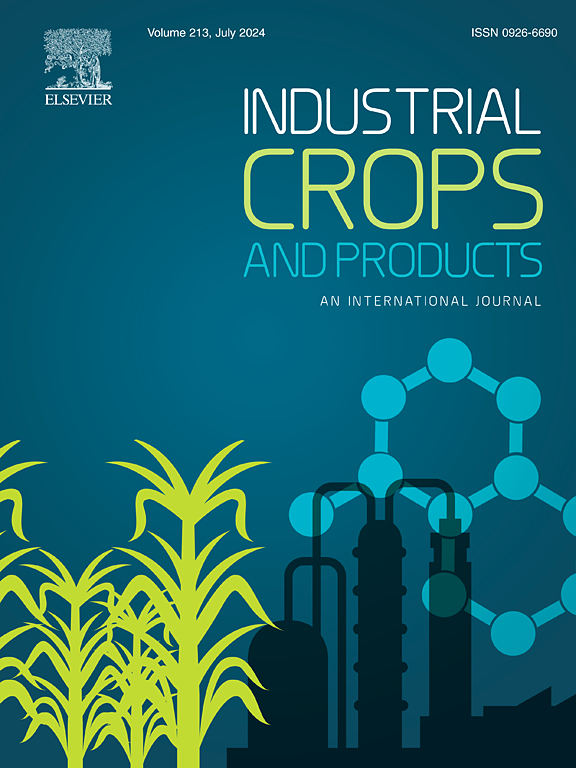Transcriptome and metabolome analyses revealed that partial desiccation treatment promotes somatic embryo germination of Picea asperata through cell wall remodeling mediated by transcription factor PaMYB12
IF 5.6
1区 农林科学
Q1 AGRICULTURAL ENGINEERING
引用次数: 0
Abstract
Coniferous species are not only important timber sources but also have significant ecological value. Somatic embryogenesis is a powerful tool for large-scale propagation of conifers. Partial desiccation treatment (PDT) significantly promotes the germination rate of somatic embryos (SEs). However, the molecular mechanism behind this is far from understanding. In this study, morphological analysis of the Picea asperata SEs showed a significant remodeling of the cell wall structure in the hypocotyl region following PDT. Transcriptome and metabolome analysis were performed to identify the key regulator of cell wall modification in response to PDT. The results showed that the metabolic products of cellular components, such as sucrose, fructose, and glucose, were the main metabolites accumulated in the SEs after PDT. Transcriptional regulatory network analysis predicted PaMYB12 as a potential hub gene. Yeast-one-hybrid and bimolecular fluorescence complementation assay showed that PaMYB12 could directly bind to the promoter regions of genes associated with cell wall component metabolism and cell wall remodeling, including GOLS (MA_3384g0010), EXPA (MA_10425823g0010), XTH (MA_10429607g0010), and BGLU (MA_48585g0010). Furthermore, the transcript levels of these genes were increased/decreased by transient overexpression/repression of PaMYB12. In summary, PDT promotes cell wall remodeling to facility SE germination. PaMYB12, which was shown to regulate the expression of multiple genes involved in cell wall component metabolism and remodeling, is proposed to be the key regulator of this process. This knowledge would contribute to a deeper understanding of somatic embryo germination and potentially inform strategies for improving plant regeneration techniques.
转录组学和代谢组学分析表明,部分干燥处理通过转录因子PaMYB12介导的细胞壁重塑促进云杉体细胞胚萌发
针叶树种不仅是重要的木材资源,而且具有重要的生态价值。体胚发生是针叶树大规模繁殖的有力工具。部分干燥处理(PDT)显著提高了体胚的发芽率。然而,这背后的分子机制还远未被理解。在本研究中,对云杉的形态学分析显示,PDT后,下胚轴区细胞壁结构发生了明显的重塑。转录组学和代谢组学分析鉴定了PDT对细胞壁修饰的关键调节因子。结果表明,PDT后,细胞成分的代谢产物,如蔗糖、果糖和葡萄糖,是se中积累的主要代谢物。转录调控网络分析预测PaMYB12是潜在的枢纽基因。酵母单杂交和双分子荧光互补实验表明,PaMYB12可以直接结合细胞壁成分代谢和细胞壁重塑相关基因的启动子区域,包括GOLS (MA_3384g0010)、EXPA (MA_10425823g0010)、XTH (MA_10429607g0010)和BGLU (MA_48585g0010)。此外,这些基因的转录水平通过短暂过表达/抑制PaMYB12而增加/减少。总之,PDT促进细胞壁重塑,促进SE萌发。PaMYB12可以调节参与细胞壁成分代谢和重塑的多个基因的表达,被认为是这一过程的关键调节因子。这一知识将有助于更深入地了解体细胞胚胎萌发,并可能为改进植物再生技术提供策略。
本文章由计算机程序翻译,如有差异,请以英文原文为准。
求助全文
约1分钟内获得全文
求助全文
来源期刊

Industrial Crops and Products
农林科学-农业工程
CiteScore
9.50
自引率
8.50%
发文量
1518
审稿时长
43 days
期刊介绍:
Industrial Crops and Products is an International Journal publishing academic and industrial research on industrial (defined as non-food/non-feed) crops and products. Papers concern both crop-oriented and bio-based materials from crops-oriented research, and should be of interest to an international audience, hypothesis driven, and where comparisons are made statistics performed.
 求助内容:
求助内容: 应助结果提醒方式:
应助结果提醒方式:


